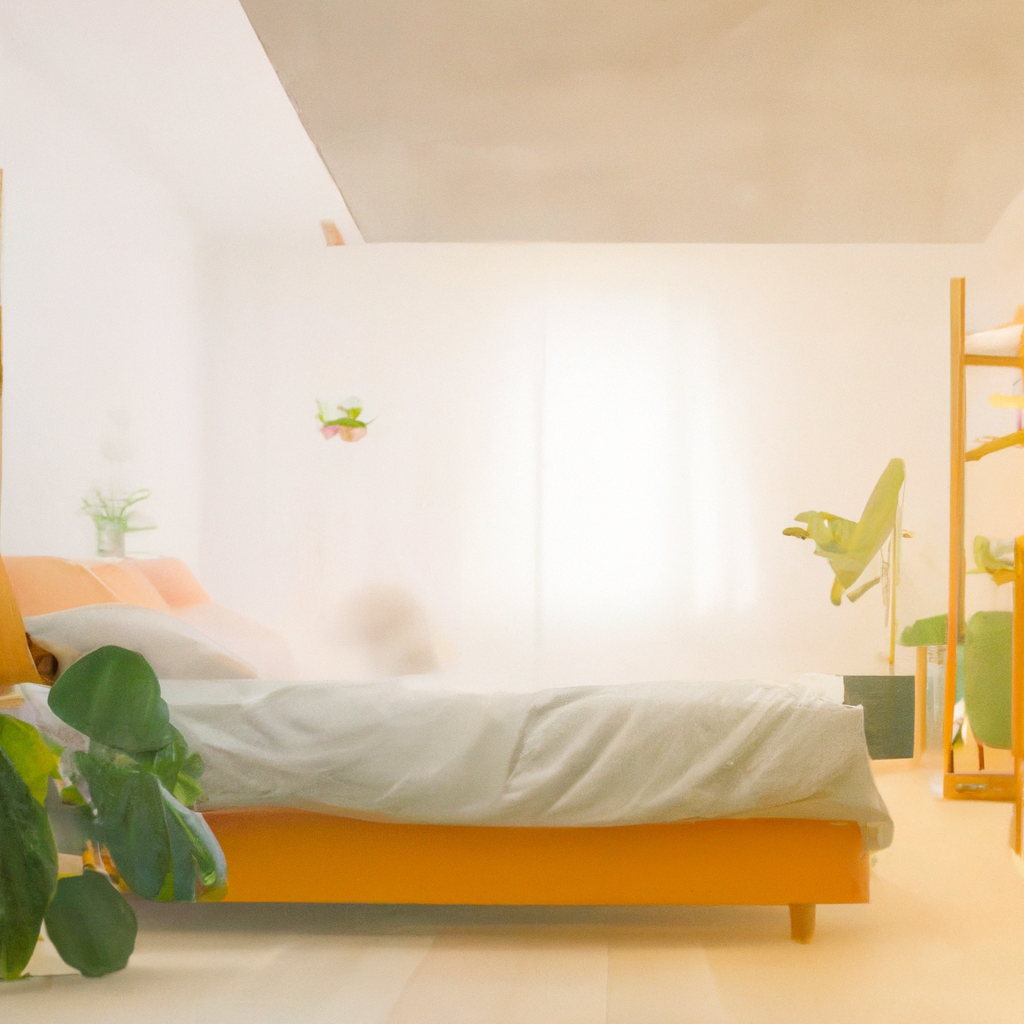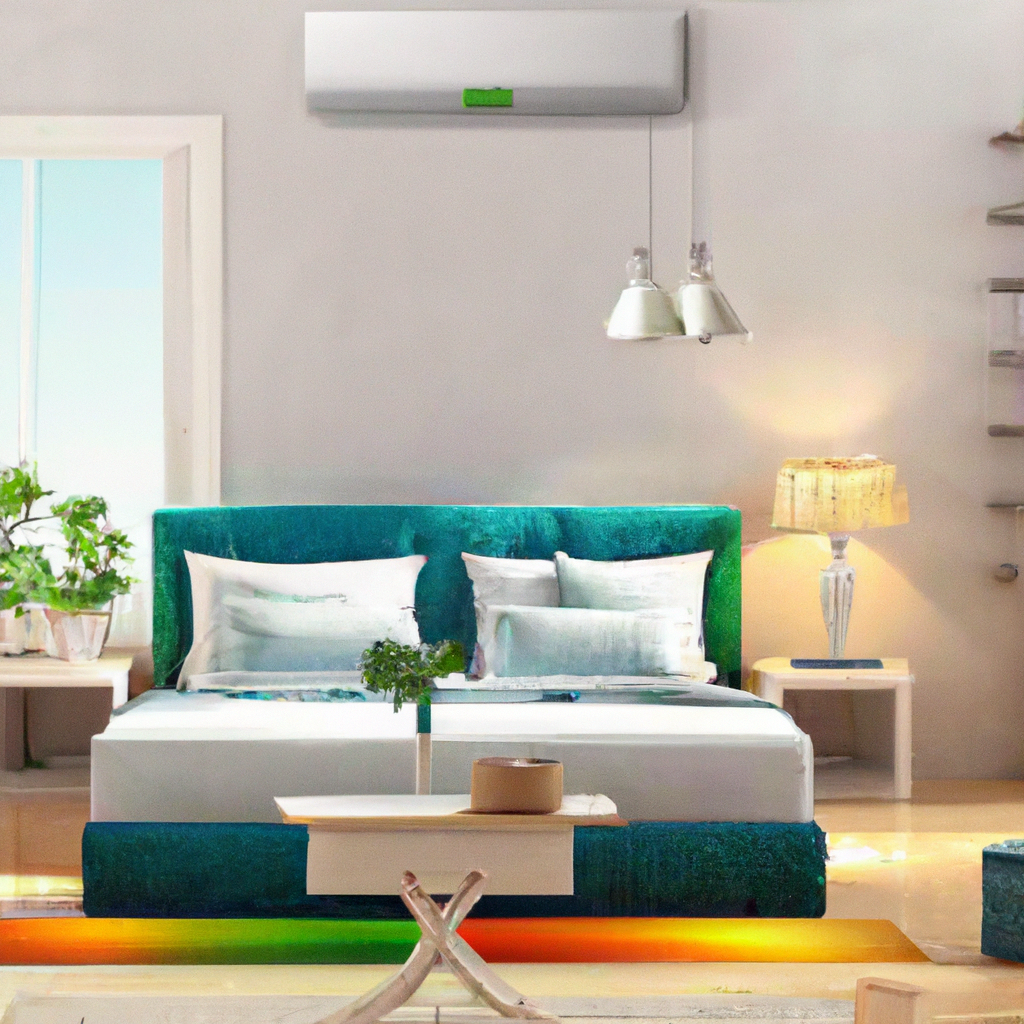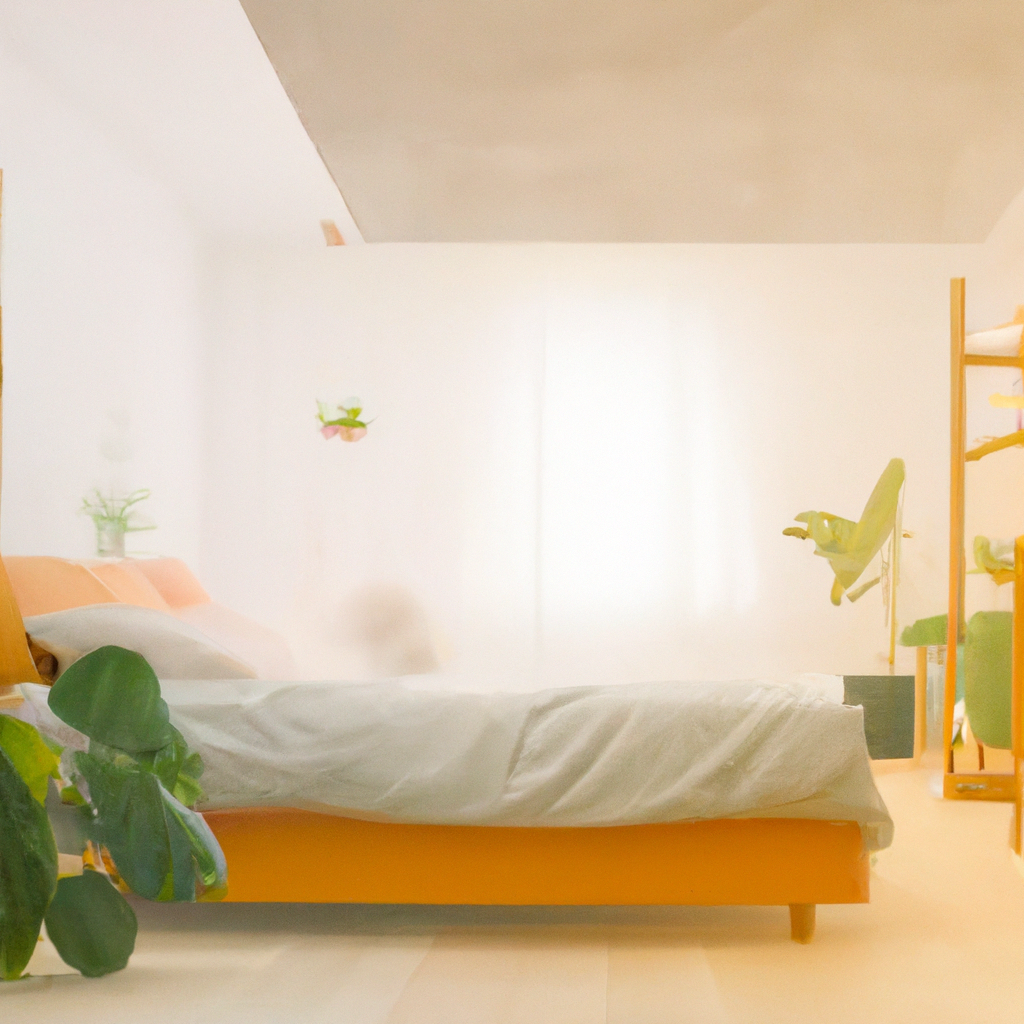Get ready to transform your bedroom into a hub of energy conservation and sustainability with this ultimate guide. Discover practical tips and innovative ideas on how to design a smart bedroom that not only saves energy but also promotes a more eco-friendly lifestyle. From smart lighting and power-saving electronics to eco-conscious materials and sustainable furniture choices, this guide will help you create a comfortable and environmentally responsible sanctuary for a greener future.

Choosing Energy-Efficient Lighting
When it comes to designing a smart bedroom with a focus on energy conservation and sustainability, one of the first considerations should be the lighting. LED lighting options are an excellent choice for energy efficiency. Not only do LEDs consume less energy than traditional incandescent bulbs, but they also have a longer lifespan. By choosing LED lighting, you can significantly reduce your energy consumption and contribute to a greener environment.
To further optimize your lighting system, consider incorporating lighting controls and dimmers. These devices allow you to adjust the brightness of your lights according to your needs, reducing unnecessary energy usage. By installing dimmers, you can create a cozy ambiance in your bedroom while also saving energy. Additionally, consider utilizing natural lighting to the fullest. Position your windows strategically to maximize the amount of natural light entering your bedroom during the day. This way, you can rely less on artificial lighting and take advantage of the free, sustainable energy provided by the sun.
Optimizing Heating and Cooling Systems
A smart bedroom should also prioritize the optimization of heating and cooling systems. One of the most effective ways to achieve this is by installing a smart thermostat. Smart thermostats allow you to program and control the temperature of your bedroom remotely. By using a smart thermostat, you can ensure that your heating and cooling systems only operate when necessary, reducing energy waste and lowering utility bills.
Another crucial aspect of optimizing temperature control is insulation and weatherproofing. Proper insulation can significantly enhance the energy efficiency of your bedroom. Consider insulating your walls, windows, and doors to prevent heat loss during colder months and minimize heat gain during hotter months. Additionally, installing ceiling fans and exhaust fans can assist in maintaining a comfortable temperature. By utilizing fans to circulate air, you can reduce the need for continuous heating or cooling, thereby conserving energy.

Selecting Energy-Saving Appliances
Energy-saving appliances play a vital role in designing a sustainable bedroom. When selecting HVAC systems, opt for high-efficiency models that consume less energy. These systems are designed to provide the same level of comfort while using less electricity. Additionally, look for appliances that are Energy Star certified. Energy Star appliances are independently tested and verified to meet strict energy efficiency standards, ensuring that you are making an environmentally friendly choice.
Another essential consideration is the use of smart power strips. These power strips are equipped with advanced technology that automatically shuts off power to connected devices when they are not in use. By using smart power strips in your bedroom, you can eliminate “vampire power” – the energy consumed by electronics that are plugged in but not actively being used. This simple addition can result in significant energy savings over time.
Implementing Smart Window Solutions
Windows are a crucial element in any bedroom design, and they can play a significant role in energy conservation. Opting for energy-efficient window designs can significantly reduce heat transfer and improve insulation. Double or triple-pane windows with low emissivity (low-E) coatings can effectively control the amount of heat and sunlight entering your bedroom. By investing in energy-efficient windows, you can reduce the need for excessive heating or cooling, ultimately lowering energy consumption.
Window treatments, such as curtains and blinds, can also contribute to energy efficiency. Insulated curtains or blinds with reflective coatings can help block heat during summers and keep warmth inside during winters. By properly utilizing window treatments, you can reduce the need for artificial heating or cooling, thus conserving energy.
Consider automating your window coverings as well. Automated window coverings equipped with sensors can adjust themselves based on the amount of sunlight entering the room or the temperature outside. By automating your window coverings, you can optimize natural lighting and regulate heat gain or loss, leading to energy savings and a more comfortable environment.

Incorporating Renewable Energy Sources
To truly make your bedroom sustainable and reduce your carbon footprint, consider incorporating renewable energy sources. Solar panel installation allows you to generate your own clean energy from sunlight. By harnessing the power of the sun, you can significantly reduce your dependence on grid electricity and contribute to a greener future. Wind turbine considerations, although not as common for residential use, can also be explored depending on the location of your bedroom and local regulations.
Geothermal heating and cooling is another renewable energy option worth considering. Geothermal systems utilize the constant temperature of the earth to provide heating and cooling. By tapping into this renewable energy source, you can reduce your reliance on conventional HVAC systems and significantly decrease energy consumption.
Choosing Low-Energy Sleep Solutions
When designing a sustainable bedroom, don’t forget about your sleep environment. Opt for eco-friendly mattresses made from natural and sustainable materials. Look for certifications such as Global Organic Textile Standard (GOTS) or Global Organic Latex Standard (GOLS) to ensure that the mattresses are free from harmful chemicals and produced in an eco-friendly manner.
Similarly, prioritize natural fibers and organic beddings. Organic cotton or bamboo bed sheets and pillowcases are not only soft and comfortable but also minimize the use of synthetic materials that have a negative impact on the environment. By choosing natural and organic beddings, you create a healthier sleep environment for yourself and contribute to sustainability efforts.
Consider incorporating smart sleep monitoring devices as well. These devices can track your sleep patterns, monitor your bedroom’s temperature and humidity, and even wake you up during your lightest sleep phase. By optimizing your sleep environment, you can ensure a good night’s rest while conserving energy by minimizing unnecessary heating or cooling.

Integrating Smart Home Automation Systems
To enhance the energy conservation and sustainability of your smart bedroom, integrate smart home automation systems. Smart light control and timers enable you to automate and control the lighting in your bedroom, ensuring that lights are only on when necessary. By using motion sensors, you can further optimize energy consumption by automatically turning off lights when no one is in the room.
Automated heating and cooling systems allow you to personalize your bedroom’s temperature according to your schedule. By pre-setting temperature adjustments based on occupancy or specific times, you can avoid heating or cooling an empty room, leading to energy savings.
Voice-activated devices, such as smart speakers, can also contribute to a sustainable bedroom. By using voice commands, you can control various aspects of your bedroom, from adjusting the lighting to playing music, without the need for manual switches or remotes. This not only enhances convenience but also eliminates the potential for leaving lights or appliances on unintentionally.
Exploring Smart Storage and Furniture Design
When it comes to designing a smart bedroom, optimizing space utilization is essential. Choose space-saving furniture options that serve multiple purposes, such as beds with built-in storage compartments or desks that can be folded away when not in use. By using furniture that maximizes space efficiently, you can create a clutter-free environment and ensure that energy is not wasted on unnecessary purchases and construction.
Smart storage solutions, such as modular shelving systems or sliding wardrobe doors, help keep your bedroom organized. These storage solutions allow you to easily access your belongings while utilizing minimal space. By organizing your belongings effectively, you can reduce the need for additional storage or larger rooms, resulting in energy and cost savings.
Consider multipurpose and transformable designs as well. Furniture pieces that can be easily repurposed or transformed adaptively allow you to make the most out of your space and minimize waste. By investing in versatile furniture designs, you can reduce the need for replacing items and contribute to a sustainable lifestyle.

Optimizing Energy Consumption with Smart Controls
To further optimize energy consumption in your smart bedroom, incorporate smart controls. Smart plugs and energy monitoring devices provide valuable insights into your energy usage. By connecting your devices to smart plugs, you can remotely control their power and monitor their energy consumption. This allows you to effectively manage energy usage and identify any devices that may consume excessive energy unnecessarily.
Motion sensors for lighting are another smart control option to consider. By installing motion sensors, lights can automatically turn on when someone enters the room and turn off when the room is empty. This eliminates the chance of lights being left on unintentionally, ensuring that energy is not wasted.
Automated curtain and blind systems can also enhance energy optimization. These systems can be programmed to open or close based on the time of day, sun position, or room temperature. By automating your window coverings, you can effectively control light and heat gain, reducing the need for artificial lighting or excessive cooling.
Creating a Sustainable Sleep Environment
To fully embrace the concept of energy conservation and sustainability in your smart bedroom, consider the materials used for your paint and flooring. Opt for eco-friendly paint options that are low in volatile organic compounds (VOCs). These paints are less harmful to the environment and promote better indoor air quality.
Indoor air quality considerations should also extend to flooring choices. Choose sustainable flooring options made from natural materials such as bamboo or cork. These materials are renewable and have a lower environmental impact compared to traditional flooring options. Additionally, consider utilizing rugs made from natural fibers to add warmth and comfort to your bedroom.
Lastly, select green cleaning products for maintaining your bedroom’s cleanliness. Avoid traditional cleaning products that contain harmful chemicals and opt for eco-friendly alternatives. These products are less harmful to the environment and contribute to a healthier living space.
By incorporating sustainable materials and products in your bedroom’s design, you can create an eco-friendly and healthy sleep environment.
In conclusion, designing a smart bedroom with a focus on energy conservation and sustainability requires careful consideration of various aspects. From energy-efficient lighting options and smart controls to renewable energy sources, every decision can contribute to a greener lifestyle. By implementing these strategies and incorporating smart technologies, you can create a sustainable and energy-efficient bedroom that promotes both your well-being and the environment.
